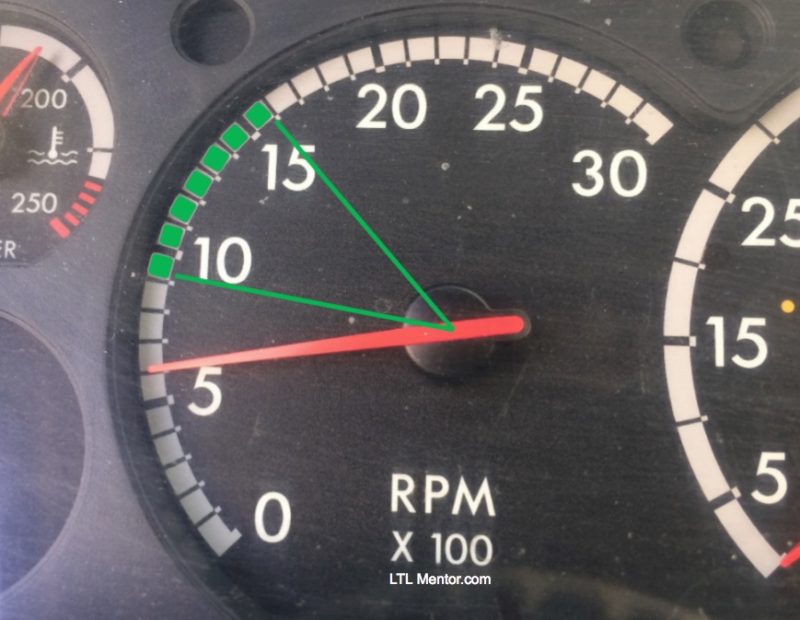Never grind gears again! Know your acceptable shifting RPM range and stay within it.
Are you grinding gears?
From my experience, there are usually 2 reasons for this.
You are either trying to enter the wrong gear for the current speed (this usually happens when downshifting), or more often, your RPMs are not in the acceptable shifting range.
It’s all about RPMs!
Every tractor has an ideal RPM range for shifting. This range will vary from truck to truck. You should know the range for your tractor.
When the RPMs are correct shifting becomes easy. There will be no need to apply excessive force to the stick; it will go into gear very smoothly with no obnoxious grinding sounds or heavy vibrations.
The ten-speed Freightliner I’m currently driving idles at 600 RPM. This truck’s general shifting RPM range is between 10 – 15. (Lower for the lowest gears)

You can view this as a shifting window.
It has an upper range of around 15 and a lower range around 10.
Once you know the RPM range you can use the tachometer like a timer. There will be no need for guessing. It will tell you when it’s time to switch gears.
Take it out of gear at the top of the range and put it into the next gear at the lower part of the range.
If you wait too long to enter the next gear and the needle drops below the bottom of the range it is going to make an ugly grinding sound. You will need to bump the fuel pedal and get the RPMs back into the lower part of the range.
Likewise, if you run the RPMs too high and then try to enter the next gear while at the top of the range you will get poor results.
When you hear a grinding sound— think RPMs!!
It’s not just a shifting range, it’s a driving range. If you are in the correct gear for your current speed the tachometer will be within this RPM window. Below the range and you will need to find a lower gear. Above the range, and you will need a higher gear. The tachometer will tell you what you need to know.
Watch the tachometer!
Eventually, you will be able to use your ears instead of your eyes to determine when it is time to shift. But in the beginning stages of learning, you should rely more on the tachometer. It will take your ears some time to learn what the correct RPMs sound like.
The ideal shifting range is actually progressive.
You can imagine the upper and lower range shifting counterclockwise for the lowest gears and progressively moving clockwise as the gears progress. The lower gears, second and third, require fewer RPMs than the higher gears, nine and ten. Many students tend to run the RPMs too high in the lowest gears.
For example: When in second gear the upper range may only be 800 RPMs. It reaches this very quickly, so I’m only in second gear a few seconds. Then I may accelerate to 10, take it out of third and switch to fourth. Then accelerate to 12 and repeat. I will progressively take the upper range up to 15 by the time I get to the ninth and tenth gears.
As a general rule:
If you are heavy, or going uphill you will need a little more RPMs.
So, if I’m both heavy and going uphill I may use an upper range of 17 or 18 when going from ninth to tenth gear.
This range will vary with different tractors. Experiment and find your truck’s ideal shifting range.
You can use the 10 to 15 range for every gear and nothing terrible will happen, but using the progressive RPM approach will help you become more efficient and get you up to top speed faster.
I will go into more specific detail about double clutching floating, and downshifting in an upcoming post.



